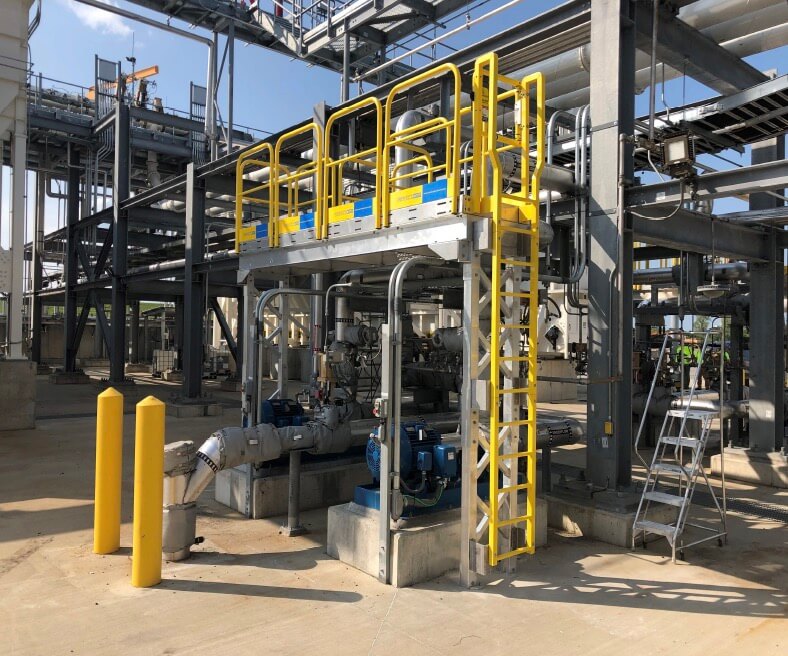It’s easy to encounter situations where it’s hard to fully grasp the bigger picture staring right at us. From friendships and business relationships to new information and products, making assumptions based on first impressions is commonplace. So is the disappointment that sets in when reality bites back.
Misconceptions are a part of life, that’s why increased awareness of our tendency toward false assumptions is key. Human error accounts for most fatalities and injuries sustained by employees while working at heights. Did you know that climbing a ladder is one of the most dangerous things you can do at work? Ladder accidents are responsible for 57% of deaths each year in the United States in the construction industry alone. This article is a great place to begin to dispel common myths to help you and your employees stay safe and productive while using a ladder in an industrial setting.
Myth #1 – Taller Ladders Can Carry Heavier Loads
The length of a ladder has no bearing on how much weight it can support. As a safety precaution, always check the duty rating of your ladder before climbing it, which indicates the maximum weight that your ladder can support.
| American Ladder Institute – Ladder Duty Rating Categories | |
| Type IAA (Extra Heavy Duty) | 375 pounds |
| Type IA (Extra Heavy Duty) | 300 pounds |
| Type I (Heavy Duty) | 250 pounds |
| Type II (Medium Duty) | 225 pounds |
| Type III (Light Duty) | 200 pounds |
The following is a straightforward formula for finding the duty rating required for the job at hand:
Your body weight +
the weight of your clothes and PPE +
the weight of your tools and materials
=
Duty Rating
The result should not exceed the duty rating weight printed on the ladder.
Myth #2 – Heavier Does Not Always Mean Safer
Ladder weight has little bearing on stability or durability. Just because your uncle’s old ladder weighs 70 pounds and works perfectly doesn’t imply that it is safe. Ladder manufacturers have innovated to make lighter weight ladders with higher load capacities over the last 20 years. This makes work technically easier, but duty ratings still apply in all cases. Looking for a mobile ladder? Browse an expert guide on buying the best rolling ladder.
Myth #3 – Fall Risk Increases as you Climb Higher
Ladder fall injuries are almost always the result of improper use, regardless of the ladder’s level or the task being performed. Ladder mishaps in the workplace are most commonly due to human error, according to 61% of respondents who took part in a 2020 American Ladder Institute poll concerning ladder safety. If you use rolling or mobile ladders or work platforms, remember this tip to keep workers safe.
Myth #4 – One Ladder Fits All Purposes
Different types of ladders have different functions. Make sure you’re up to date on which ladder is ideal for your requirements. A rolling ladder, for example, is the practical solution when doing aircraft maintenance checks, where the worker must frequently transfer ladders to different locations. In contrast, a ladder with configurable heights is the best solution for warehouses where workers must reach items on shelves at varying levels. Know what job will be accomplished before choosing the right ladder.
Myth #5 – Ladders Must Be Replaced Every 5 Years
The biggest myth in fall protection is that equipment, including ladders, has only up to 5 years of service life. The American National Standards Institute (ANSI) maintained this standard until 2012, and all fall protection had no retirement dates when ANSI updated this provision. Thorough equipment checks are now conducted to assess the service life of any fall protection products. It is necessary to have an evaluation of fall protection equipment by a trained and competent person at least twice a year to guarantee safety and compliance with manufacturer standards. Some products, such as self-retracting devices (SRD) must be sent back to the manufacturer for periodic safety checks.
Myth #6 – Climbing Up a Ladder Has the Highest Risk
It may be heart-pounding for certain people to leave the safety of the ground, which is why some find the process of climbing a ladder the riskiest part. It’s tempting to think you’re safer when closer to the floor. This is far from the truth. A false sense of security can result in complacency, which poses far more risk. When you aren’t paying close attention to your activities or environment, you are much more likely to make a mistake. Many ladder-related accidents are caused by people failing to reach the bottom step of a ladder on the way down, which accounts for 20% of ladder accidents. Staying vigilant and being aware every step of the way is the key to safety while working on a ladder.
Safety on ladders is a major concern, and fall protection is a shared responsibility between companies and workers. Employers must develop a safety plan as well as a rescue strategy for every project. No two situations are the same which is why each location brings potential hazards. The investment of time and resources in personal fall arrest systems (PFAS) are significant, however it is a necessary hoop to jump through to create and sustain a safe workplace.
Operation managers and organizations can minimize the incidence of fatalities and accidents caused by falls at work by implementing adequate planning, training, and fall arrest systems. By keeping workers safe, productivity is boosted, and the bottom line can increase.
Understanding the hazards of incorrect ladder use is what saves people from fatal fall injuries. Thankfully, ladder accidents are preventable. Through training, prevention, and the use of quality products we can dispell the myths and keep workers safe.
Have questions about ladder safety? Need assistance selecting the correct ladder for your purposes? Contact us today!









